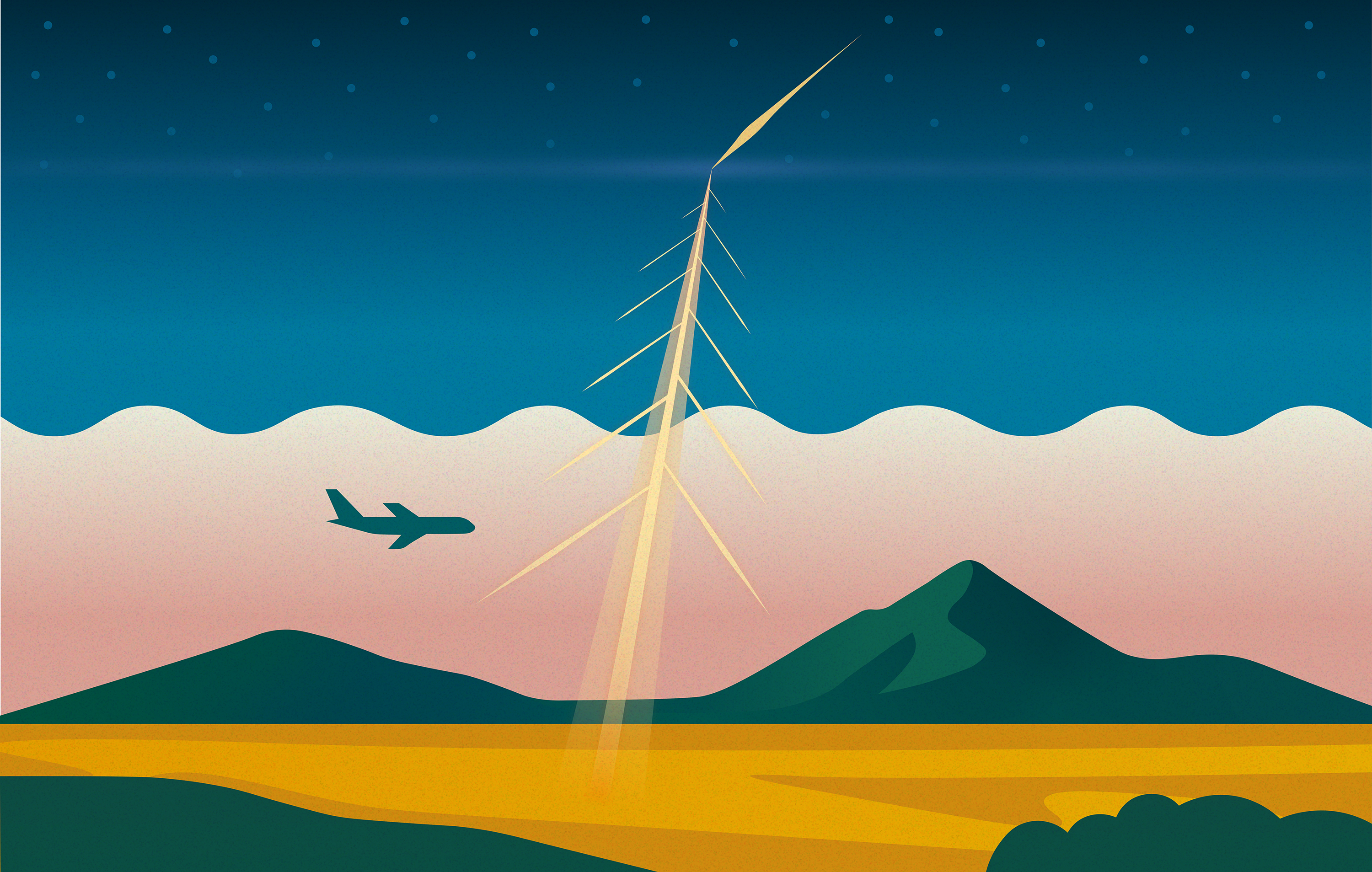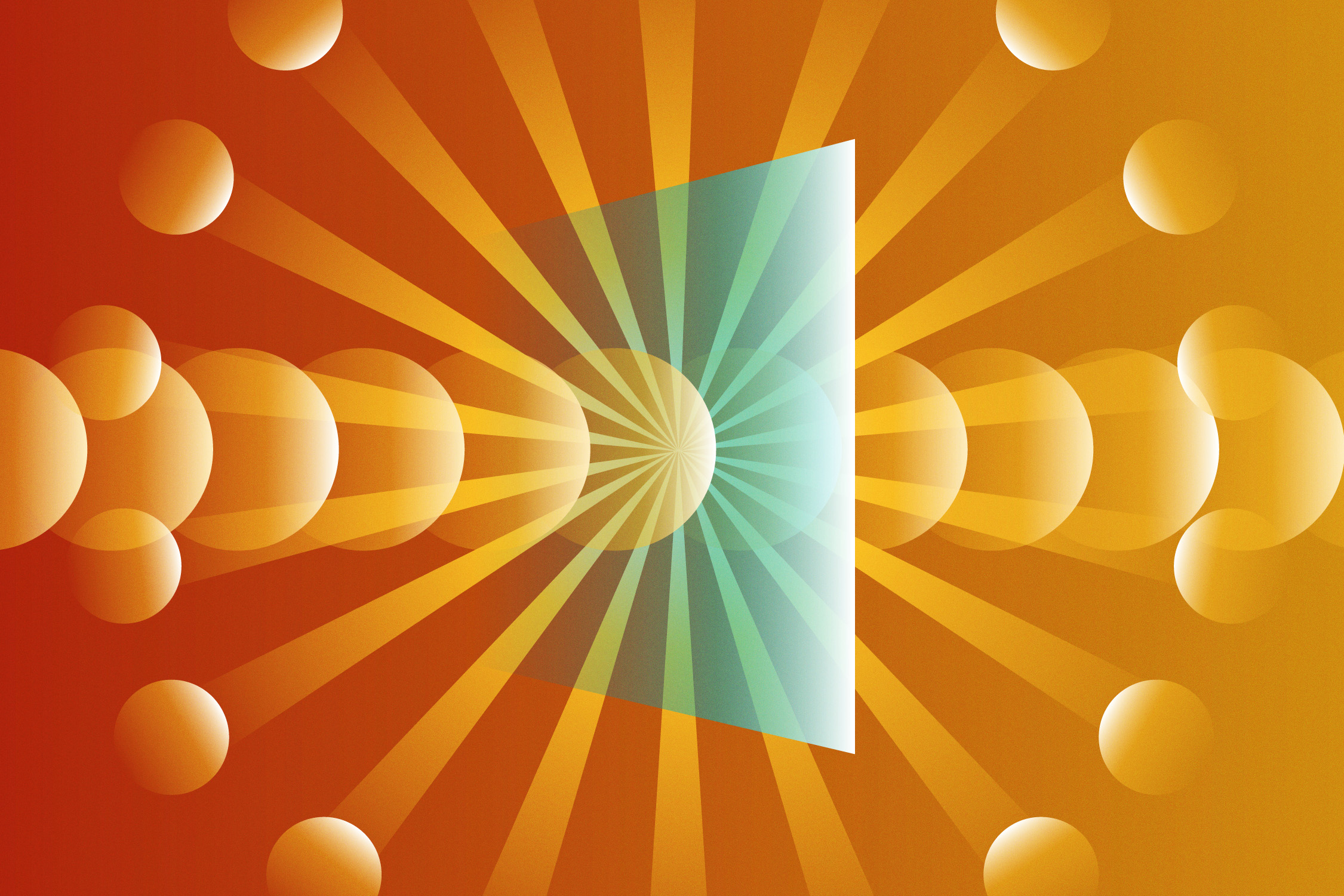Bringing Neutrinos Back to Los Alamos
Los Alamos scientists were the first to detect neutrinos. Now a new batch of scientists is going after a new kind of neutrino, even harder to find than the first one.
- Eleanor Hutterer, Editor
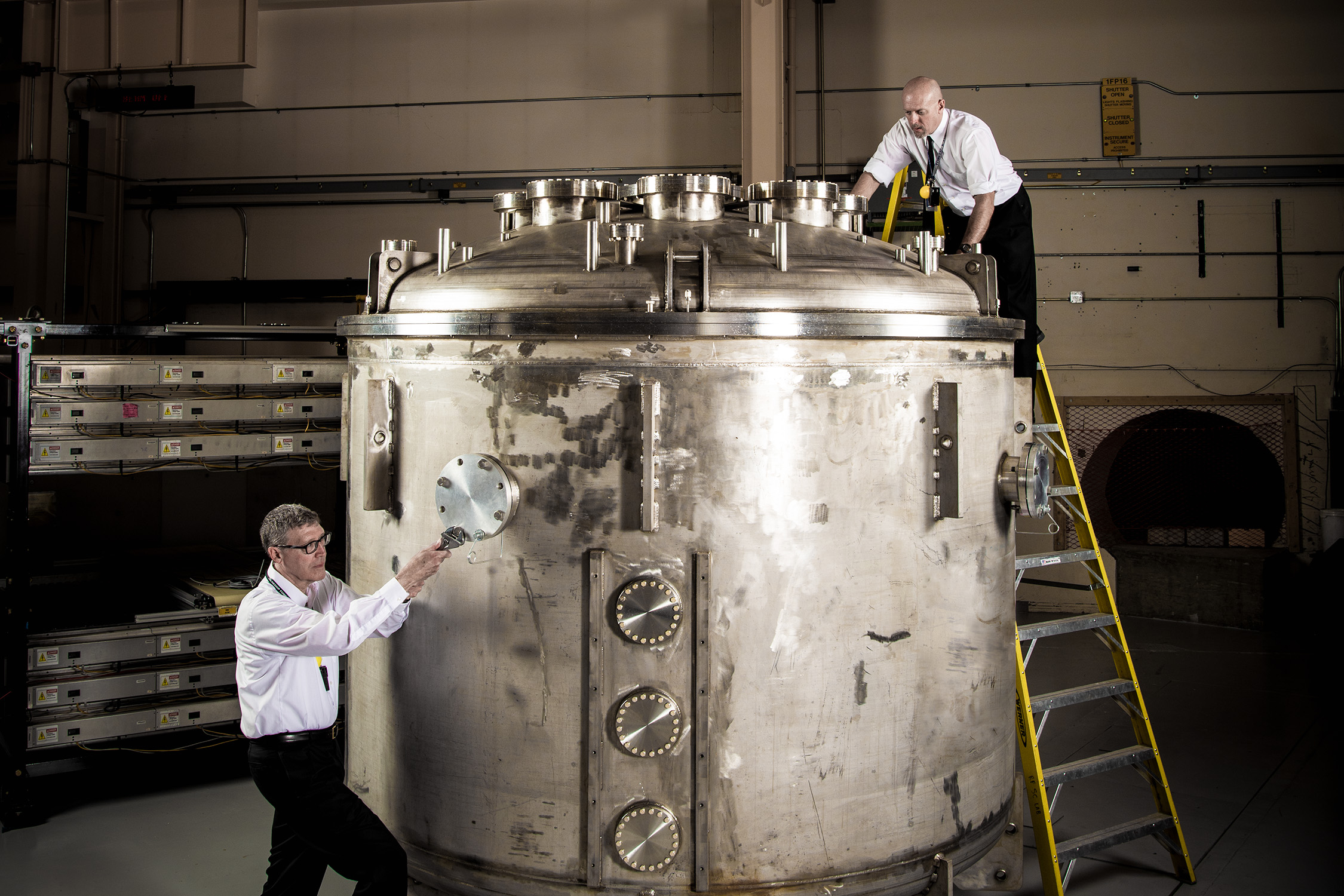
The Laboratory has been home to many Nobel laureates. But in only one instance was the prize-winning work done during the winner’s tenure at Los Alamos. That was in 1956, when Fred Reines and Clyde Cowan proved the existence of a new kind of subatomic particle, the neutrino. Since then, neutrino science has continued at the Lab and elsewhere, leading to three more Nobel Prizes. Now, new experiments at Los Alamos are poised on the brink of a new discovery, which looks to be just as exciting as any of them.
In 1930, theoretical physicist Wolfgang Pauli proposed that a new particle—invisible and uncharged—was needed to satisfy the law of conservation of energy during radioactive decay of atomic nuclei. Pauli used the name “neutron,” which was the same name given to another, more massive particle. Pauli’s contemporary Enrico Fermi, who would later join the war effort at Los Alamos, resolved the nomenclature problem by giving the less massive particle the Italian diminutive “-ino,” and voila! The neutrino.
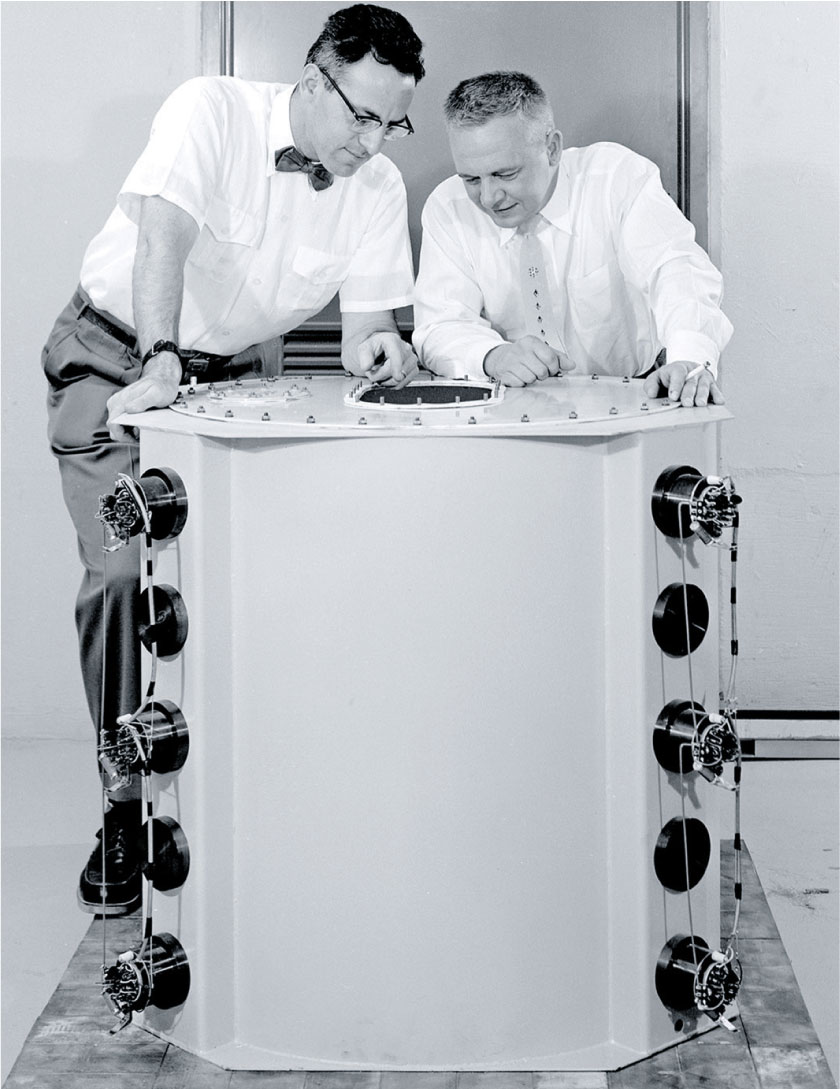
Scientists now know that neutrinos are among the most abundant particles in the universe—hundreds of trillions of them stream unobtrusively though our bodies every second of every day. So far, three varieties are known: the electron neutrino, the muon neutrino, and the tau neutrino. Neutrinos are almost completely inert, interacting with other particles only by gravity and by the weak nuclear force. In fact, Fermi based his original postulation of the weak nuclear force on Pauli’s proposed, and still hypothetical at the time, new particle.
In the early 1950s, as the Laboratory was expanding from a war-time weapons lab to an institution with broader interests, Reines and Cowan, spurred by the general consensus that it was impossible, set out to capture the elusive neutrino. Because neutrinos are so inert, the likelihood of one interacting with a detector is remote, so a tremendous number of neutrinos is needed to be able to observe just one. The duo initially intended to use an underground nuclear bomb test as the source of this tremendous number of neutrinos, but they quickly determined that a nuclear reactor would be better, so they took their detector—a rig about the size of a modern washing machine—to the reactor at Hanford, Washington.
After preliminary work at Hanford, the team decided to build a bigger and better detector at the brand new reactor in Savannah River, South Carolina. It was there that they finally and conclusively observed the electron antineutrino—the antiparticle of the electron neutrino, whose very existence proved the existence of the other. Reines and Cowan sent a jubilant telegram to Pauli in Switzerland informing him of their success. Clyde Cowan died in 1974, and Fred Reines alone was awarded the Nobel Prize in 1995 for their work.
Nowadays most neutrino detectors are much, much larger. Usually they are international collaborations involving thousands of tons of liquid in enormous vessels thousands of feet below the surface of the earth. But the latest neutrino detector at Los Alamos, though larger than the first, is still quite small, just three meters tall, and shaped like a pressure cooker.
Reines and Cowan relied on brute force and brilliance, but this latest Los Alamos neutrino detector has the benefit of serendipity as well. It turns out that the proton beam at the Los Alamos Neutron Science Center—established in 1972 to study the short-lived subatomic particles known as pions—is an abundant source of neutrinos, which are a natural byproduct of charged pion decay. Also, the three-meter-tall pressure cooker, which was built by a different group in 2014 for an unrelated experiment, was no longer needed and was up for grabs. In 2017, Richard Van de Water and Bill Louis acquired it and are now in the process of converting it into a liquid argon-based detector to prove the existence of an as-yet hypothetical neutrino variant: the sterile neutrino.
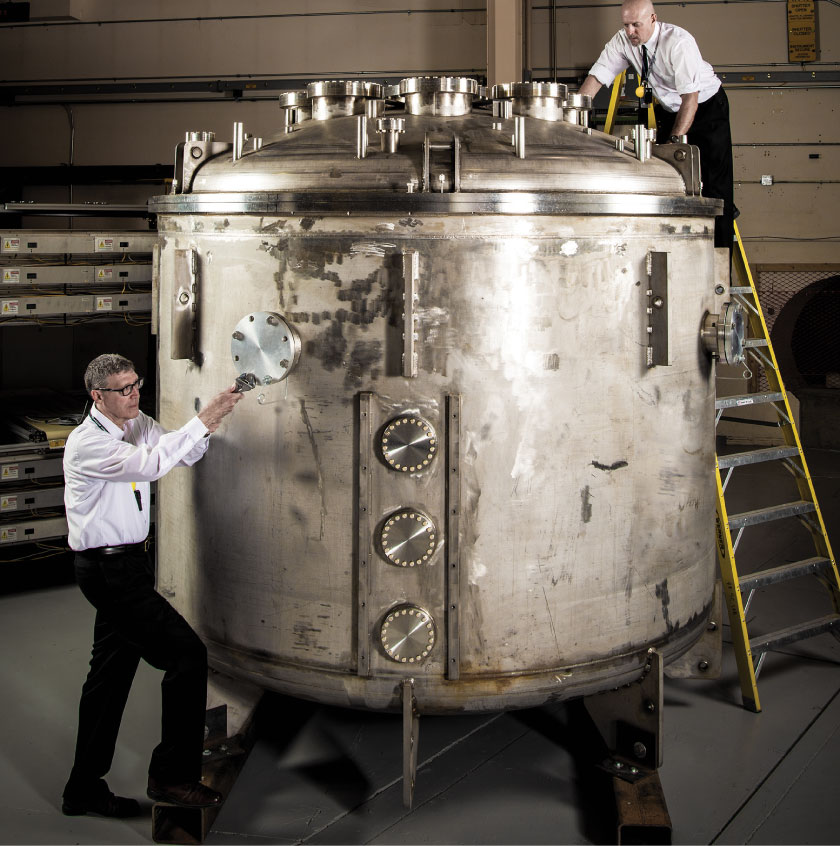
Whereas regular neutrinos are almost inert, interacting only by the weak force and gravity, sterile neutrinos, if they exist, have to be completely inert, interacting by none of the known forces of particle physics, only gravity. For a decade, Louis and collaborators ran the Liquid Scintillator Neutrino Detector experiment at Los Alamos, which, via the same reaction picked up by Reines and Cowan, led to the first experimental evidence of sterile neutrinos. Presently, Louis and Van de Water collaborate on the Mini Booster Neutrino Experiment at the Fermi National Accelerator Laboratory near Chicago, which, by way of a different reaction, has produced even more convincing evidence for sterile neutrinos. The pressure-cooker detector is designed to detect sterile neutrinos in yet a third way: by the oscillation of muon neutrinos into sterile neutrinos, which will look like muon neutrinos disappearing.
Many scientists thought neutrinos could be important to resolving the dark matter conundrum—i.e., what it is and how it works—but the mystery persists. Now the idea of sterile neutrinos is tantalizing as a possible portal to the dark sector. If sterile neutrinos really do exist, it will be the biggest thing in subatomic physics since the quark. If not, it will still be a big deal, because whatever Louis and Van de Water are measuring, it’s not nothing. It’s definitely something.
There is a shared sense among physicists that there is not-yet-discovered physics at hand, and everyone is drilling in a different place to find it. Louis and Van de Water are drilling at the place where medium-energy muon neutrinos can transform into sterile neutrinos. They’ve seen it with two different experiments so far, and they’re going for a hat trick.
Some say it can’t be done. That it’s impossible. But then, they’ve said that before.

